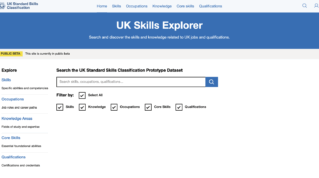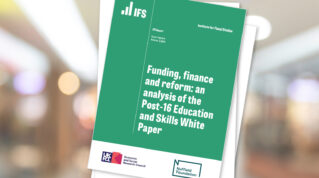For almost 30 years, CSCS cards have been a golden ticket to work on building sites but as an FE Week investigation exposed last year, they’re open to abuse.
Not only do unscrupulous individuals offer fake cards claiming they beat anti-fraud technology, but others have infiltrated training centres to sell them to people who aren’t given the necessary health and safety training.
With huge labour shortages in construction, the emergence of fake cards became rife.
Stakeholders must be confident in the skillsets of those they employ. Likewise, newly qualified apprentices awarded a degree, diploma or certification must be reassured they are competing on a level playing field with others in the industry.
Physical cards no longer meet the demands of a modern construction workforce. It’s time to move towards a smarter, digital solution; digital passports.
Causeway Technologies is spearheading a campaign that involves lobbying ministers and stakeholders to make digital skills passports mandatory in every public construction project.
The technology is already used on some of the UK’s largest projects – by more than 600,000 people in the UK. What’s missing is policy leadership to make it mandatory.
A digital skills passport allows employers, contractors and clients to instantly verify a worker’s qualifications, competencies, and health and safety records.
It provides a secure digital profile connecting verified qualifications, training records and on-site experience in one continually updated platform. The worker simply logs in or scans a QR code on a mobile device, instantly sharing verified training, qualifications, and competency data.
Why is this so important? Because whether you’re managing a major infrastructure project or building a single home, you need to know the person doing the job is trained, and the evidence is real. Without digital checks, it’s far too easy for credentials to be forged, missed or left out of date. That’s not just an admin issue – it’s a safety risk.
Causeway Technologies provides the digital infrastructure powering current skills passport systems. Our technology does not oversee the passport itself but ensures stated skills are transparent, portable, and trusted – bridging education outcomes with workforce deployment.
The technology already powers the workforce systems behind Network Rail’s Sentinel and the Highways Passport scheme, the world’s largest passport programme. In total, it is used by over 900,000 workers worldwide.
In the new skills white paper, it was revealed Skills England has been tasked with exploring the further development of skills passports.
The new government agency will “review best practice and learn from previous experience”, but the idea is the passports would list an individual’s skills, competencies and work experience in a standardised way.
Digital skills passports can provide:
- Virtual safety: A short-life QR virtual check-in backed by multi-factor authentication means IDs can’t be screenshot. In other words, they change, so can’t be copied.
- Approved training providers: Skills passports are backed by a list of approved training providers who can add qualifications. Should qualifications be applied fraudulently, it would be flagged and the company responsible blocked.
- Link to governing body databases: Skills passports can link directly to governing body system databases and be checked.
- Photos: All passports have images on them, and true 3D biometric checks can be used for secure sites.
- Evidence: Unlike a physical card, a skills passport can list not only qualifications but copies of certifications and training hours, all stored on the person’s record.
Of course, no system is immune to abuse and there will always be people looking to cut corners. But that’s exactly why we need better tools to close the gaps. If we want to protect workers, uphold standards and build with confidence, we can’t rely on plastic cards and good intentions.
A digital skills passport should be industry standard. It’s time to move from intent to implementation and set a new standard for skills and safety that takes workforce trust to the next level.
















“my cscs” is a digital skills passport already in use by the CSCS – this is actively in use and works alongside all new applications for cards – we are hearing guys express a preference for this